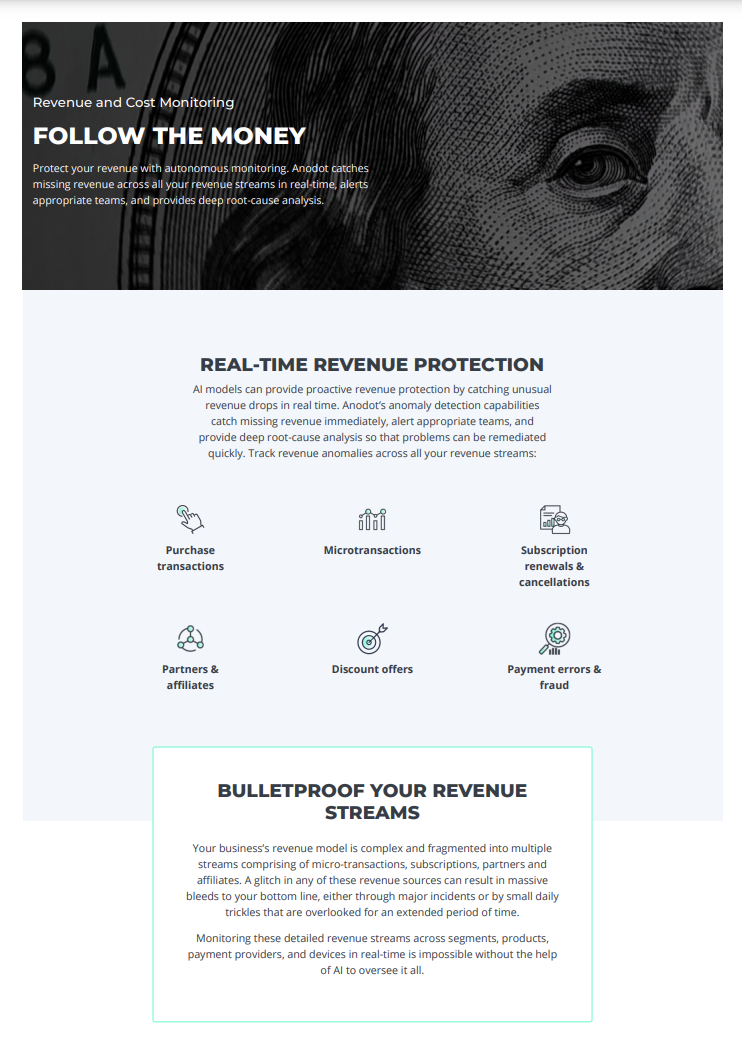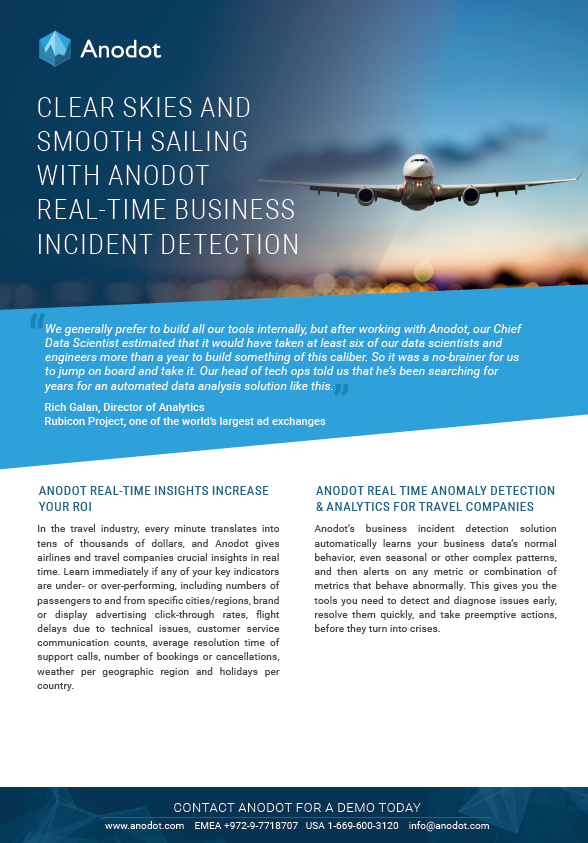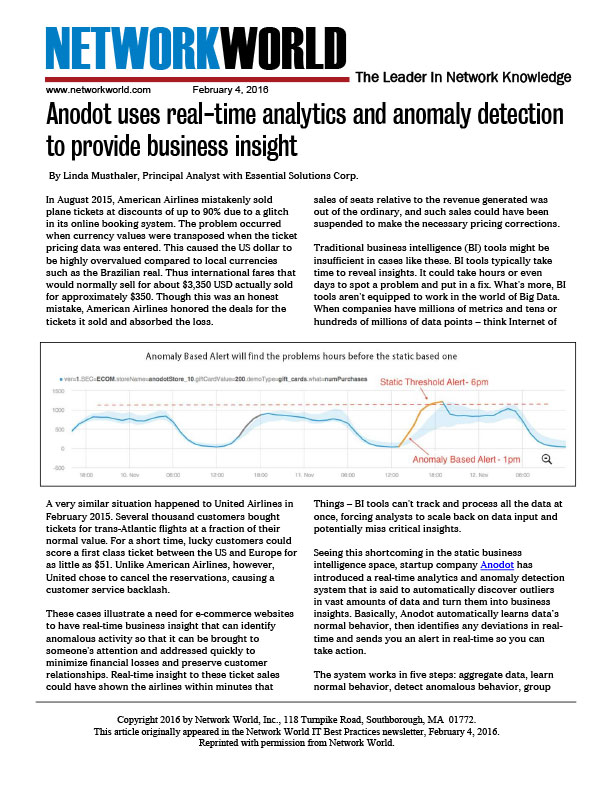Blog Post
3 min read
Stop Drowning in Your Google Analytics Data
Like most web based businesses and SaaS companies, one of our go-to tools for a quick check of the usage of our service is Google Analytics. Typically we log in and we see the pleasing wave of application traffic, with the predictable seasonal drops during the weekend, and increases during the week. We get a daily report of usage per customer and look at the main flows in our service.
Rapid Anomaly Detection
Of course, Google Analytics is a great source of time series data, so we decided to stream the analytics about the Anodot application into the Anodot service, to see what our algorithms could discover. Sure enough, we quickly uncovered some interesting anomalies, such as this one, showing a major traffic drop at one of our customers for one of the pages in our app (one of about 50).
When we checked a little further, we saw that a similar anomalous drop was happening to multiple clients, and it all happened at the same time.
Challenging to Investigate the Issue in Google Analytics
Interestingly, when we went back to Google Analytics to see what we had missed, we saw… not much. In fact, if you look at the Audience Overview graph (below) for the same period, you might notice a slight drop in sessions, but nothing major. Yet Anodot picked up and highlighted an anomaly in seconds. What gives?
If we dig a bit deeper within Google Analytics, especially knowing exactly what time period, page and customer to look for, we do see that there was a major drop in total pages viewed during the period in question:
But even with Google Analytics Page Views graph, it can be challenging to detect the issue and isolate the root cause, or to understand which customers are most affected, and which pages, and what the heck is going on.
Anodot Finds the “Slow Leak”
Using Anodot it was very easy to do a quick root cause analysis. Turns out we had done a version upgrade right before the drop. The upgrade caused an issue in part of the app, but didn't break it, just reduced the page views.
Of course if it had broken something major, we would have seen it right away (and been flooded with phone calls). But since it was a “slow leak,” we might not have noticed it for weeks.
In Google Analytics, the issue was hard to spot and isolate, but with Anodot’s Business Incident Detection Platform, we immediately saw the drop, correlated it with the software upgrade, and quickly rolled out a fix.
--
Start detecting anomalies in your Google Analytics data now.
Read more









